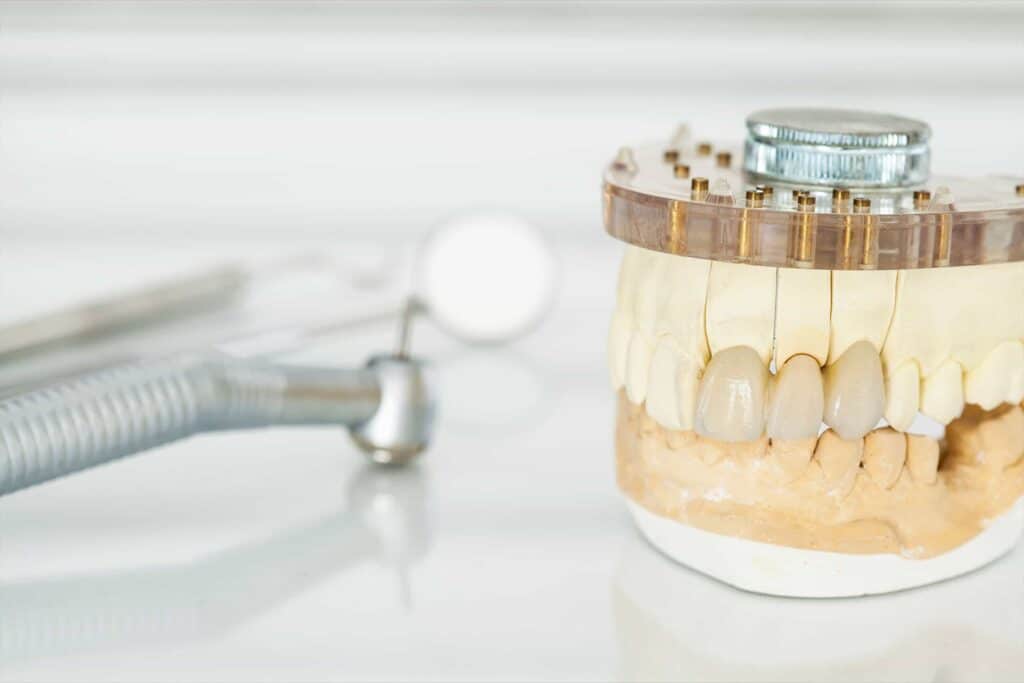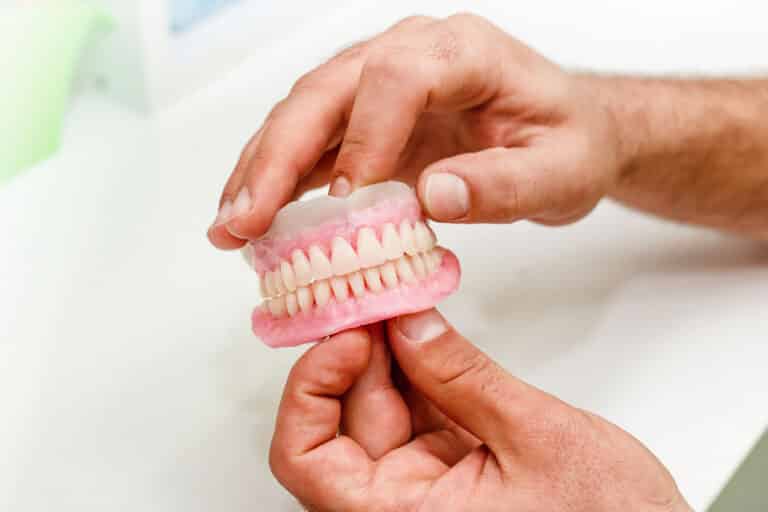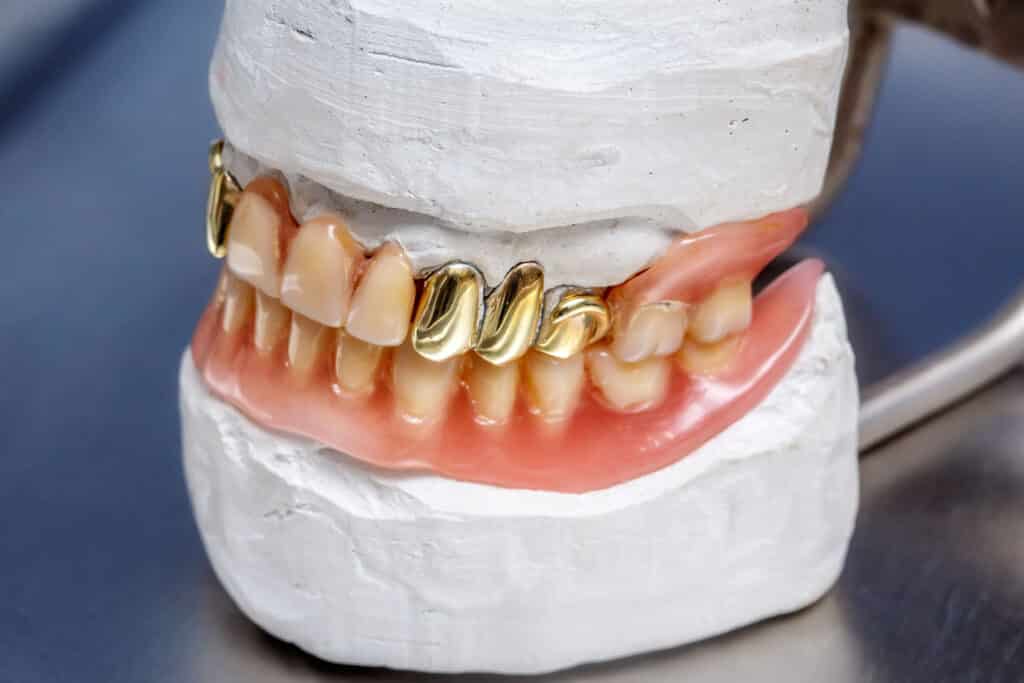When an adult tooth is removed by a dentist or oral surgeon, a blood clot fills in the space where the tooth was removed. The clot helps to protect the nerves and bone exposed during the procedure. Once something is done to dislodge the blood clot, the result is a dry socket (alveolar osteitis). It is a very painful condition that may typically requires treatment.
What Causes a Dry Socket?
When a dentist or oral surgeon performs a tooth extraction, the extraction site has a hole where the tooth once was. A blood clot forms and covers the bone and nerves. After the surgery, the blood clot is fragile and can become dislodged, which leads to severe pain from a dry socket. There are other things that increase the risk of developing dry socket.
Increased Pressure
Creating too much pressure within the mouth increases the dry socket incidence rate. Increased intraoral pressure can make it so the blood clot becomes dislodged. This can happen when using straws, spitting, vigorous swishing, or even holding in a sneeze.
The clot can also become dislodged from pressure inside the blood vessels within your body. Physical exertion, such as with exercise or lifting heavy objects, significantly increases the risk of developing dry socket. It is important to take it easy after a tooth removal procedure to prevent dry socket.
Smoking
Smoking is one of the other risk factors that increase the risk of dry socket after a tooth extraction. There is an increased risk, as much as three times higher, of developing dry socket when smoking1https://www.ncbi.nlm.nih.gov/pmc/articles/PMC9317683/. The actual act of sucking creates pressure inside the mouth and the chemicals placed in the mouth impede proper healing of the extraction site.
It is known that tobacco use, typically with cigarettes, increases the risk of dry socket after surgery. There is currently less research that has looked into how marijuana and vaping plays a role in getting dry socket. At this time, it is safest to assume that both marijuana and vaping has similar risk factors as with tobacco use. The best medical advice is to avoid all forms of smoking and tobacco, including smokeless tobacco.
How Can You Prevent a Dry Socket?
In most cases, preventing dry socket is possible and is luckily straightforward. The dentist or oral surgeon who performed the tooth extraction usually gives specific post-op instructions which covers dry socket prevention. Here’s a quick summary:
Avoid Pressure Within The Mouth
After a tooth extraction procedure, you will want to avoid doing anything that creates pressure in the mouth. This includes avoiding spitting, using straws, sucking on anything, vigorously swishing any liquid, and holding in a sneeze.
If you need to sneeze, just let it go. While this still creates pressure, most people cannot prevent the act of sneezing on command. If you need to rinse, do not close your mouth. Instead keep your mouth open and roll the liquid around in your mouth.
Rest and Avoid Exercise
Do not exercise or work. Lifting heavy objects, exercising, or returning to work too quickly may cause a dry socket. Most people should take around three days before returning to light duty. However, your dentist may have different instructions depending on your specific situation.
Soft Foods
Eat soft foods and avoid hot or cold foods and liquids to avoid a dry socket. Hard and crunchy foods or temperature extreme foods can increase chances of developing a dry socket.
Proper Hygiene
You will want to keep the area as clean as possible with good oral hygiene while not disturbing the clot. Leave the extraction site alone for a day or two, or as long as your dentist instructs. If you are concerned about keeping the area clean, avoid the area or ask your dentist for advice.
Avoid Smoking
As previously mentioned, avoiding the use of all smoking products, including marijuana and vaping, will help the healing and avoid dry socket.
All these things are especially important when you have multiple teeth extractions since there are more areas for a dry socket to occur. It is easier to develop complications after surgery if there are more extraction sites. Be extra cautious until it heals.
What Does a Dry Socket Look Like?
A dry socket looks like a big hole at the extraction site. Since the tooth socket should be filled, an empty socket is essentially what a dry socket will look like. The hole may appear dry and empty since there is exposed bone. Other things that may be visible include:
- There may be some white portion that is visible. This is actually the jawbone itself.
- Sometimes food debris may be visible within the socket itself.
This can create a different coloring on the surface. Some people are unable to see the dry socket themselves but just have a hole where their tooth was. If you are unsure, avoid feeling the area with your tongue or finger as this can contribute to a dry socket.
Your dentist may want an exam to determine if a dry socket occurs, but because symptoms of pain are the most common indication of it, they may just need to look at the extraction site to tell.
Your dentist may also take x-rays of the area to ensure no tooth fragments were left in the socket during the removal process, which could also cause inflammation and pain. This is a different complication of a tooth extraction, which may have similar symptoms of dry socket.
What Does a Dry Socket Feel Like?
Dry socket symptoms are often straightforward. The primary symptom is significant pain even with the use of painkillers. For many people, that pain can be excruciating, often ranking as a 8+ out of 10 on a pain scale.
The pain is intense and very specific to that area. In some cases, it may feel as though it is throbbing, with the entire outside of the jaw hurting from the ear down. It can cause headaches and often the person has trouble sleeping or focusing on daily tasks.
In addition to this, dry socket can create tenderness throughout the area of the mouth. Bad breath may develop from damaged tissue and bacterial growth in some cases. The area of surgery will also feel empty and food will easily get stuck in the area.
This is because the blood clot that filled in the extraction area is missing, which exposes bone and allows for food to get stuck.
How Long Does a Dry Socket Last?
When properly treated, most people find relief in as short as a day but it can take up to a couple weeks. During this time, new tissue in the socket grows. This helps to cover the exposed socket, reduce pain, and encourages healing.
There is the risk of complications to some people, though. The most difficult process for most people is managing pain. However, in some cases, the area may develop an infection. If infection occurs, you may notice a foul odor, tenderness, and intensifying pain. Most often, antibiotics are prescribed at this point. These work to get rid of the infection, allowing the tissue to heal properly.
How Do I Treat a Dry Socket?
It’s best to alert your dentist about any significant pain you have beyond three days of the tooth extraction. In some situations, if the pain is tolerable, you may be able to do nothing more than brush and floss properly as instructed by your dentist and give time for proper healing. The more you can do to keep your mouth healthy during this process, the better. This helps to reduce the risk of infection.
Dental Treatments for a Dry Socket
If professional invention is required, your dentist will need to numb the area, remove any damaged tissue and irrigate to clean the site. A new blood clot is then reintroduced in the area. Sometimes the dentist may fill the socket with a medicated dressing to help with severe pain management.
Then once the pain is tolerable, the socket will heal but this takes time. It can take up to a couple of months for the gums to close over the hole.
Pain Management for a Dry Socket
While some discomfort and pain are normal after a tooth extraction, severe symptoms are not normal. For many with alveolar osteitis or dry socket, the pain is intense and impacts overall quality of life and wellbeing.
Keep in mind the main goal is to make the pain more manageable, which for most people is to bring the level down to a 2 or 3 out of 10 on the pain scale. Finding a way to manage that while it heals can be challenging. Always speak to your dentist or oral surgeon about the proper pain medications in your situation, especially if you are using other medications or cannot take the recommended drugs.
When it comes to what type of pain medications to take, doctors typically provide the most effective but least risky type of medication to help you with managing the pain. Most of the time, this is done with over-the-counter analgesics. That includes medications such as ibuprofen and other NSAIDs (non-steroidal anti-inflammatory drugs).
Depending on how painful it is, opioid medication may be prescribed to help manage breakthrough pain. This is up to the individual dentist’s judgment. It is normal for a dentist to not prescribe any pain medication after a tooth extraction. Depending on the complexity of the surgery, you may not need a prescription.
Don’t wait to call your dentist if you have severe dental pain or believe you have a dry socket. Doing so sooner may help you find treatment options to alleviate pain and manage infections if present.
Was this post helpful?
References
- 1





